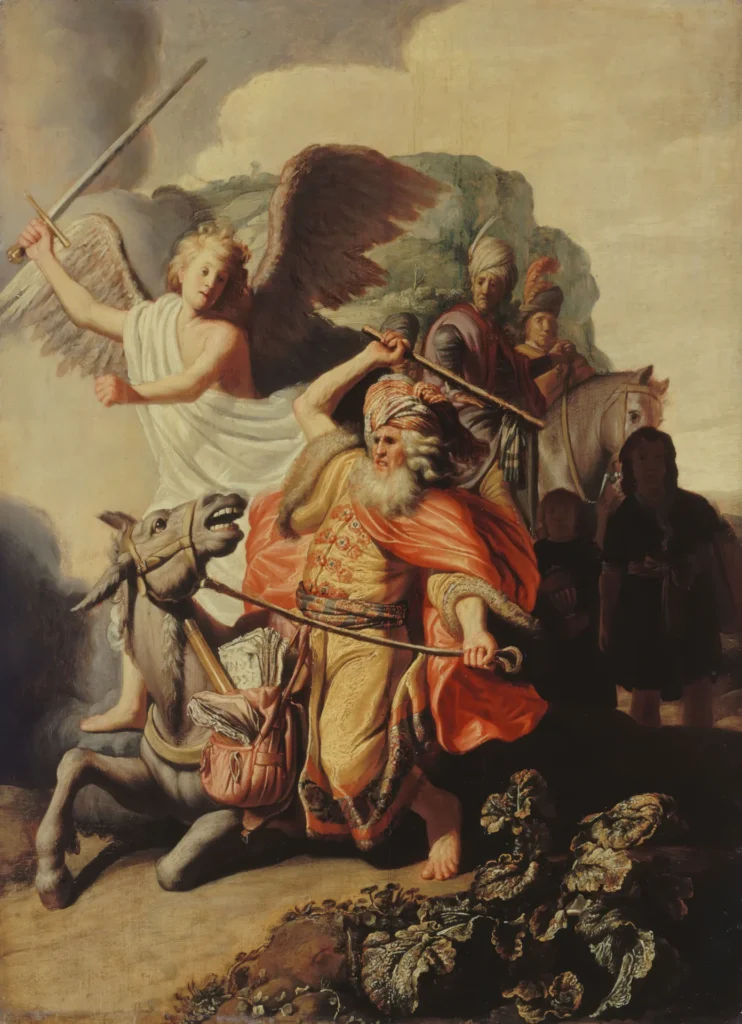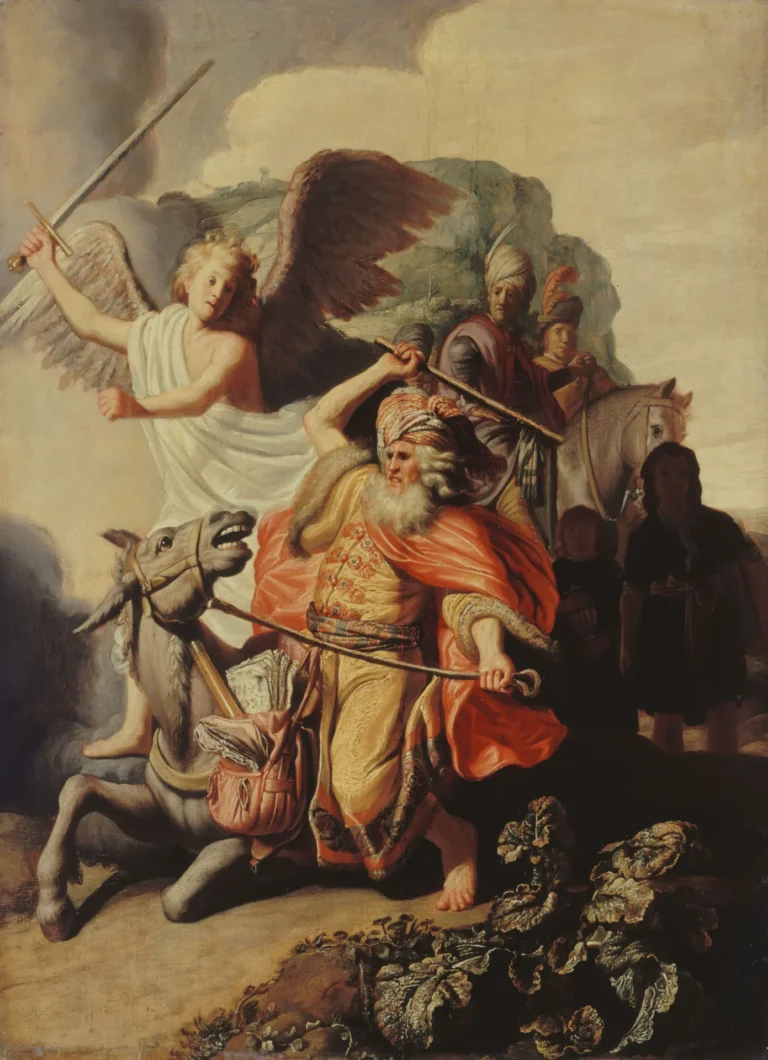Balaam and the Ass
Balaam and the Ass is one of the early masterpieces created by Rembrandt in 1626, showcasing his developing skills and unique artistic voice. The painting depicts a pivotal biblical moment from Numbers 22:21-34, where Balaam, the heathen prophet, is rebuked by his talking ass amidst a dramatic encounter with an angel. The vivid emotional expressions and dynamic composition highlight Rembrandt's future mastery in elucidating complex human and divine interactions.
1626
About the Artwork
The enchanting artwork Balaam and the Ass unravels the biblical tale of Numbers 22:21-34, presenting the moment when Balaam, unwillingly summoned to curse the Israelites, is confronted by divine intervention through his donkey. Overcome with frustration, he overlooks the angel blocking their path; only his faithful ass possesses the foresight to evade the impending danger. This undercurrent of humor and irony makes the scene particularly poignant as the ass ultimately speaks out in defense. Rembrandt captures this encounter with striking insight, portraying an intense, dramatic confrontation that showcases the artist's prowess in infusing emotion into a historical narrative.
Did You Know
Liked what you see? Add it to your collection.
Enjoyed reading? Share it.
... continued
The painting Balaam and the Ass by Rembrandt van Rijn, created in 1626, is one of his early works from his time in Leiden. Here are some key points about the artwork:
Composition and Influence
The painting is based on a composition by Rembrandt's teacher, Pieter Lastman, who addressed the same subject in 1622. However, Rembrandt introduced a dynamic and dramatic element to the scene that was not present in Lastman's work.
Biblical Context
The painting depicts the biblical story from Numbers 22:21-34, where Balaam, a heathen prophet, is on his way to curse the Israelites at the request of King Balak of Moab. During the journey, Balaam's ass refuses to move three times because an angel blocks the path, invisible to Balaam. After the third refusal, the ass speaks to Balaam, and subsequently, the angel becomes visible to him.
Artistic Elements
- The painting features the central figures of Balaam, the ass, and the angel. Rembrandt's composition emphasizes the dramatic interaction between these characters, with the angel moving from the right to the left of the canvas, his sword poised to strike Balaam.
- The ass is depicted with wide-open eyes, indicating she sees the angel, while Balaam's eyes are small and dark, symbolizing his lack of vision.
- The angel is shown in flight, with exaggerated wings and a muscular build, wearing a precariously attached white garment. His left hand is extended towards the ass in a gesture that could be interpreted as reassuring or consoling.
- The painting also includes Balaam's servants and Moabite representatives in the background, adding to the sense of drama and confusion.
Symbolism and Details
- Rembrandt used brush techniques to suggest similarities between Balaam and the ass, such as the coarse fur of Balaam's hat mirroring the ass's hairy ears and straight forelock. This could be a way of highlighting their shared humanity or the blurring of lines between prophet and creature.
- The scene is set against a backdrop of schematically painted vineyards, adding a sense of place to the narrative.
Current Location
The painting is now housed at the Musée Cognacq-Jay in Paris.
This work showcases Rembrandt's early skill in capturing dramatic moments from biblical narratives and his ability to add unique interpretations and dynamism to established themes.










